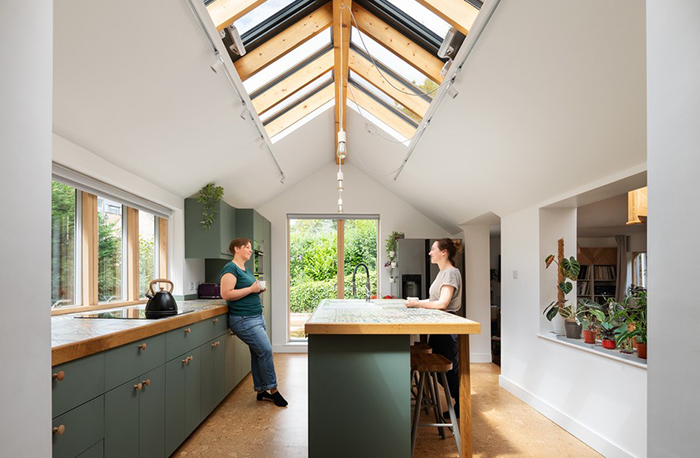Problem areas for small practices working in the residential sector frequently arise from the client’s poor understanding of the scope of the design services they are going to get, according to architect and client adviser Jane Middlehurst.
She suspects that at least some of the blame rests with TV home renovation shows creating unrealistic expectations among prospective clients that have never undertaken a project before. Room dressing to achieve the perfectly-lit Instagram shot is unlikely to be part of the service in the real world.

Explain to domestic clients the difference between reduced and full service
Many clients are buying what might call a "reduced fees service" covering drawings, planning, and building control only.
"This can leave clients leading the project without realising what they have agreed to take on, and then wondering where their architect has gone when they have to choose products for their contractors or oversee works on site."
Compounding the problem, she argues, is that architects have not been taught how to effectively communicate the levels of service on offer for a given fee.
Middlehurst will be seeking to put this right at the RIBA Guerrilla Tactics conference for small and medium practices in November. She will be drawing on her recently developed CPD module on Client Relationship Management based on her own experience in practice.
As co-founder of Poulsom / Middlehurst she has worked with residential clients for over 10 years. The duo more recently set up HomeNotes to offer online courses for homeowners, empowering them to become better clients before they take the plunge, and offering advice throughout a project.
These days, architects' services range from shell design to hands-on interior decoration with numerous variations in between. Will details be bespoke or left to the contractor, or worked out with the contractor on site with the architect acting as project manager?
Early communication about services and fee levels is key
All of this means that the key to a positive architect-client relationship is early communication about where the practice’s standard service sits on this spectrum, and what additional services might be available.
The architect should explain how different levels of service will impact fees, and how some options could be more cost effective for the client according to what level of responsibility they are willing to take on.
The explanation can also sketch out how scenarios might play out. One area that can become contentious, for instance, is how many changes and design iterations will be entertained before the time budgeted for this runs out. It is much better for the client to appreciate such details at the outset than feel frustrated when the architect’s goodwill runs out.
A pricelist approach can be effective, presenting packets of priced work that the client can choose from. This has the advantage of making it clear to the client what work they will not be getting because they have chosen to reject it.
The contractual relationship may differ if services extend to interior design
Architects for their part need to appreciate what they are getting into if their services are drifting into interior design.
Architects are usually acting as the client’s agent in contract terms, leaving the contract for the supply of products and materials between the manufacturer/supplier and the client.
Interior designers have a different contractual relationship with their clients, sourcing fixtures, fittings, and equipment (FF&E) as suppliers and taking on contractual responsibility for the fitness of goods themselves.
Architects might consider using hybrid, bespoke contracts to cover their interior design services, says Middlehurst, by including provisions from the RIBA/BIID domestic professional services contract 2020: interior design services or the RIBA/BIID concise professional services contract 2020: interior design services into their appointment documents.
She takes an entirely neutral stance on the level of service architects might offer. There is no right way of doing things. What matters, she stresses, is that agreements are transparent and that clients fully understand the scope of the service they will be getting on their project.
Thanks to Jane Middlehurst, co-founder of Poulsom / Middlehurst and HomeNotes.
Text by Neal Morris. This is a Professional Feature edited by the RIBA Practice team. Send us your feedback and ideas.
RIBA Core Curriculum topic: Business, clients and services.
As part of the flexible RIBA CPD programme, professional features count as microlearning. See further information on the updated RIBA CPD core curriculum and on fulfilling your CPD requirements as a RIBA Chartered Member.









